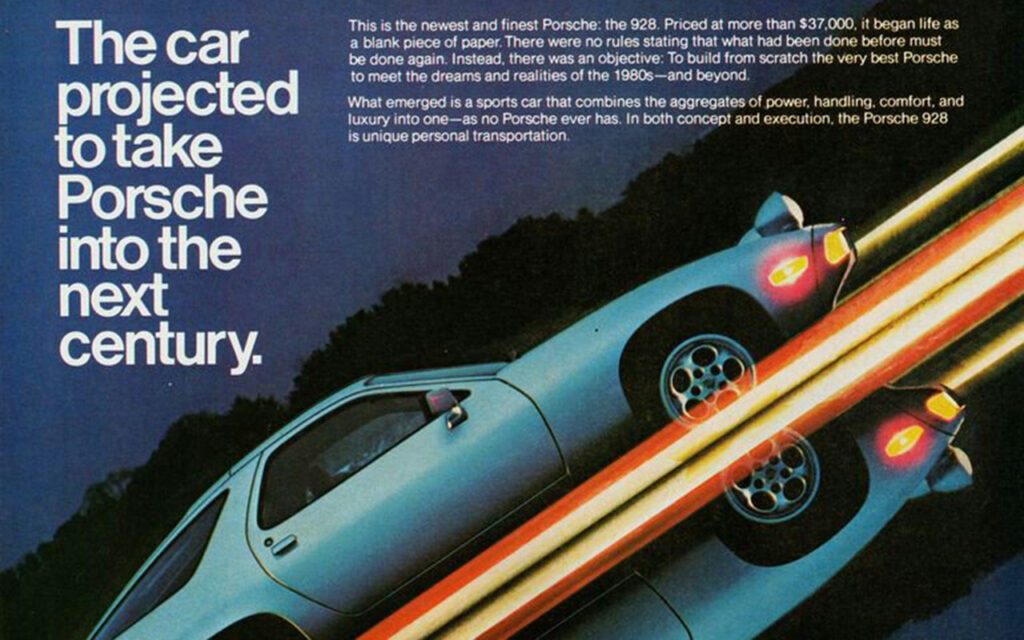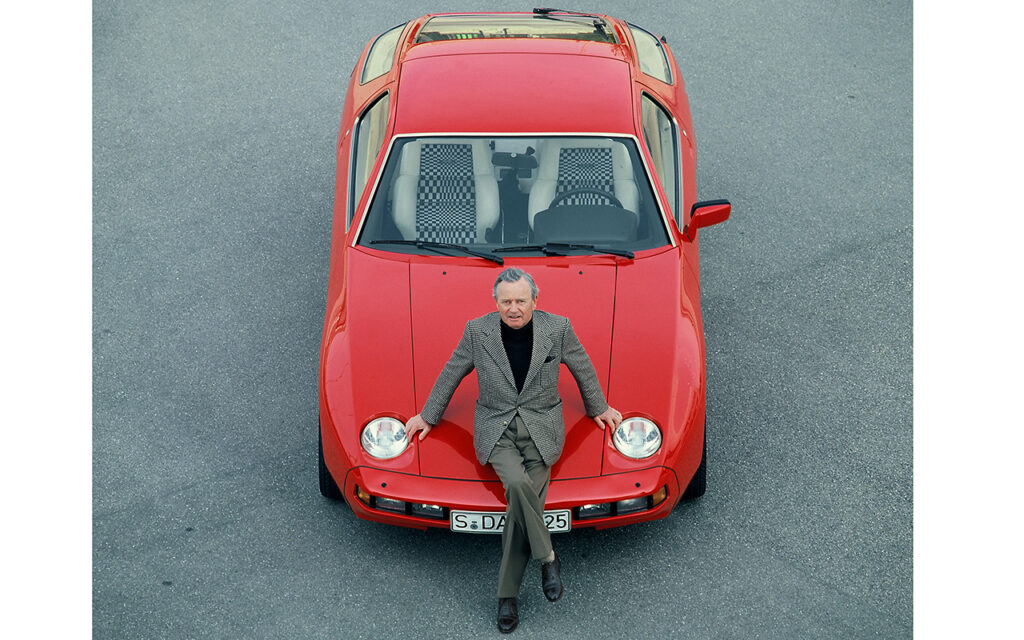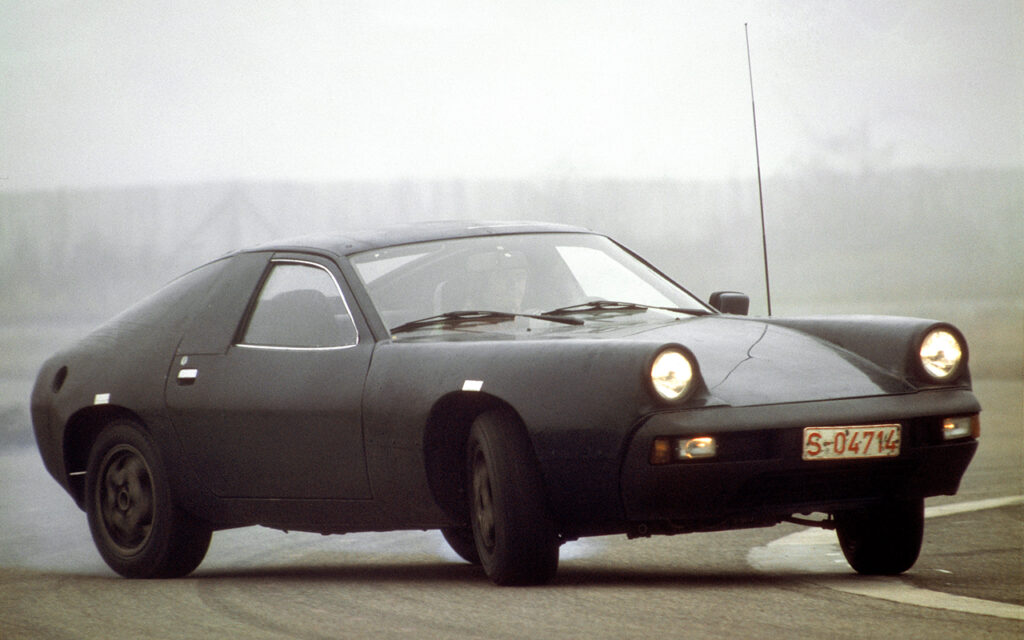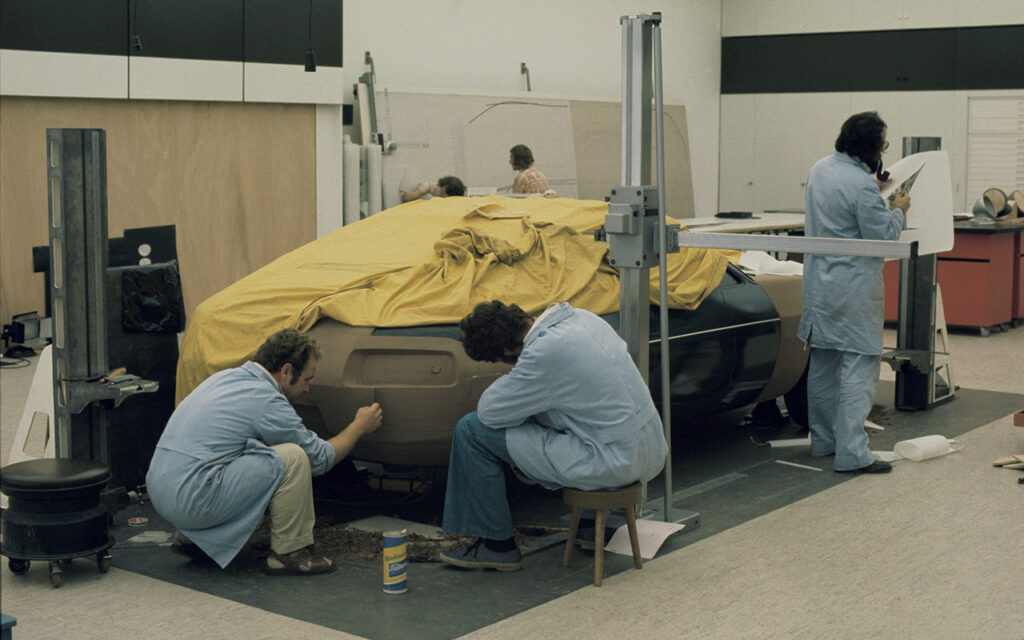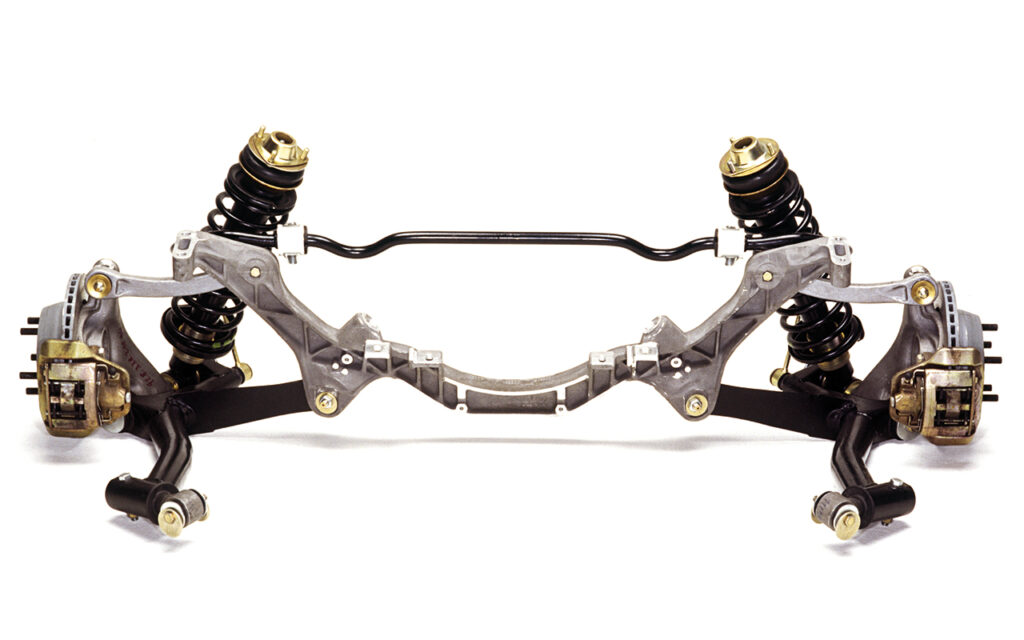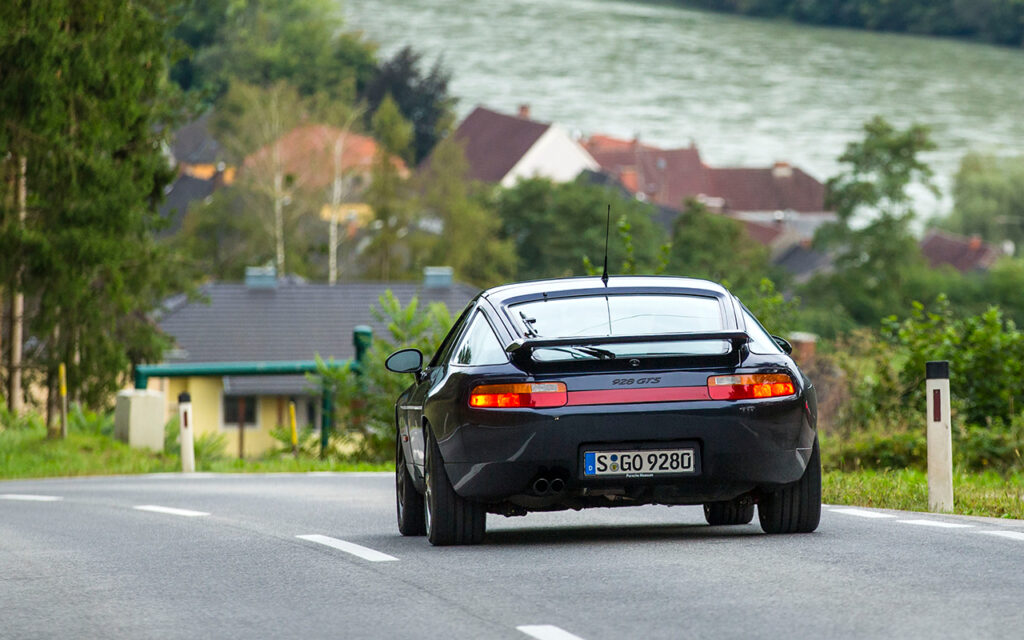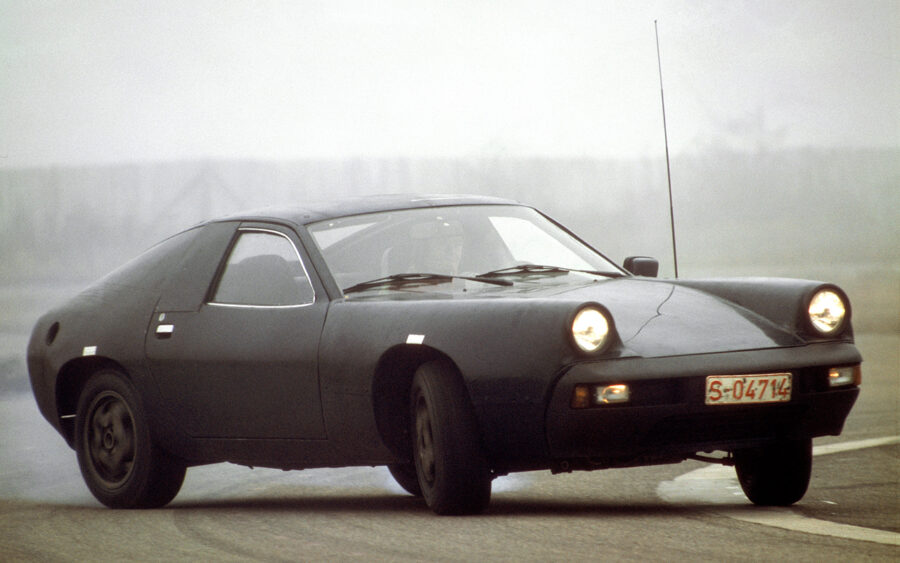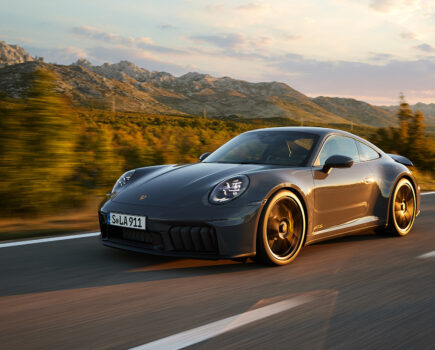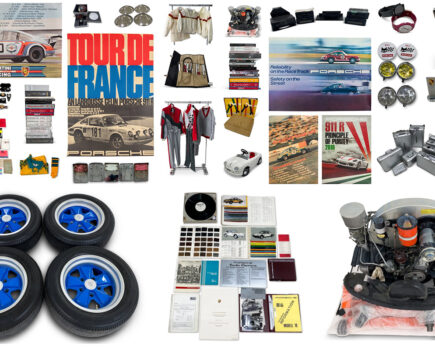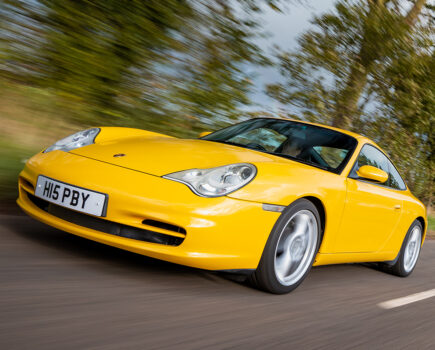The Porsche 928’s famous rear suspension arrangement – the Weissach axle continues to influence how every new Porsche drives
Words: Shane O’Donoghue Images: Porsche
It may come as a surprise to hear the name Weissach, as applied to the 928’s famous rear axle, stands for winkel einstellende, selbst stabilisierende ausgleichs-charakteristik, which more or less translates as angle-adjusting, self-stabilising equalisation characteristic in English. I suspect I’m not alone in assuming the axle’s name referred to Porsche’s research and development headquarters in Germany, not far from the town of, er, Weissach.
As is the German way, the name of this system is self-explanatory, but that shouldn’t take from the fact the design and development of this rear suspension solution was a significant technological milestone, setting the path for the handling of all Porsches to the present day. Fittingly, there’s a glorious backstory to its invention.
It all starts in 1971, when development of the 928 began. The conception of that model by Ernst Fuhrmann – Technical Director, then Chairman of the Board at Porsche – is well-documented. Following severe criticism levelled at the 911 from safety advocacy groups in North America, Fuhrmann was worried about the future viability of rear-engined cars that required a good deal of skill to drive. The company also wanted to expand its customer base, especially in the USA. With this in mind, Ferdinand ‘Ferry’ Porsche foresaw an opportunity to do so with a more luxurious, spacious and easier-to-drive GT-style car. Fuhrmann fully expected this new model to replace the ageing 911.
Though early planning for the 928 considered rear and mid-engine layouts, both were dismissed as unsuitable for the new Porsche’s remit, mostly because of packaging and refinement challenges. A front-engined setup with a transaxle combining the rear differential and gearbox (to assist with even optimised weight distribution) was decided upon. In 1973, the first prototype, in part based on the Mercedes-Benz SL, was created to test the new transaxle and, latterly, the Porsche’s new V8 engine. The Mercedes underpinnings indicated where Porsche was pitching the 928, aiming for long-distance comfort and low noise, but with a sporting bent.
Moreover, Porsche adopted a similar rear suspension design as found in the Mercedes, with semi-trailing arms, a subframe for the transaxle and MacPherson struts combining the spring and damper in one axis. Indeed, the layout wasn’t all that dissimilar to what was in use in the contemporary 911, with more focus on compliancy and noise isolation. To that end, a huge amount of rubber was used in the bushings, which helped the 928 to fill its remit in terms of improvement over to the 911’s noise, vibration and harshness (referred to as NVH in the industry), though from the start, it was clear the 911’s infamous lift-off oversteer trait was present in the 928 test mule and, as the new Porsche was intended to be sold to a much wider range of buyers – and, therefore, showroom customers varying in their level of driver skill – our favourite manufacturer’s engineers had to find a fast fix.
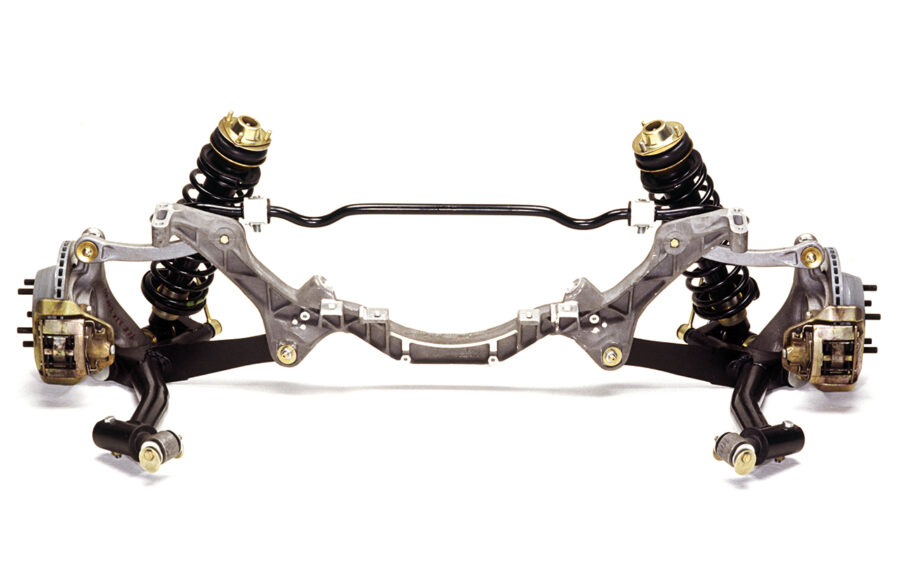
Porsche 928 Weissach axle
Before we get into the detail of how they tackled the task at hand, it’s worth a quick look at the physics involved. Due to the compliance in the rubber bushings of a semi-trailing arm rear suspension, there is some variation in the ‘toe’ of the wheel. Looking straight down on the rear axle, if a wheel is turned in towards the car’s centreline, then you’re looking at what’s known as toe-in. Toe-out, logically, describes the wheel turning away from the car’s centreline. Now, on deceleration, rear wheels suspended by traditional semi-trailing arms tend to toe-out or splay, primarily due to the vehicle body’s forward motion relative to the wheels.
The softness of the bushings in the suspension determines by how much the wheels toe-out. It may not be obvious to a casual observer, but even a small angle of toe-out can have a massive effect on the handling of the car. Now consider all this happening when the car is already turned into a corner — picture a situation where the driver needs to adjust the speed of the car mid-corner and backs off the accelerator. Two things happen simultaneously. First, the weight distribution of the car rushes forward, considerably lightening the load on the rear tyres.
Second, the rear wheels both toe-out. At this point, there is very little load on the inside rear tyre, meaning its angle doesn’t have a strong effect. Hence, the angle of the outside wheel is of utmost importance to the car’s stability. It effectively steers the rear of the car toward the outside of the corner in often sudden oversteer. It takes a fair degree of skill to predict and react to this behaviour, especially in an emergency situation, where there may be no space on the road to recover the resultant slide.
What did Porsche’s band of talented engineers do? After all, the phenomenon was not a new one and, while the theory of what was happening was understood, how to get around it was still a mystery. Bear in mind how engineering in those days consisted of physical trial and error of components and designs, as opposed to today’s on-screen simulations generated by powerful computers.
Porsche set its engineers, Wolfhelm Gorissen, Manfred Bantle, and Helmut Flegl the task of solving the problem for the 928. They started by putting together another test mule. This time, rather strangely, it was based on the relatively new Opel Admiral B, a big and heavy four-door luxury saloon. The Blitz-badged boxy four-door was chosen after Gorissen, Bantle and Flegl came up with the idea of a second ‘driver’, one who could be responsible for steering the rear axle. The big Opel’s rear suspension was replaced with the prototype 928 system, with extra linkages added to allow independent steering of the rear wheels. This was controlled by a second steering wheel, fitted to the rear passenger compartment.
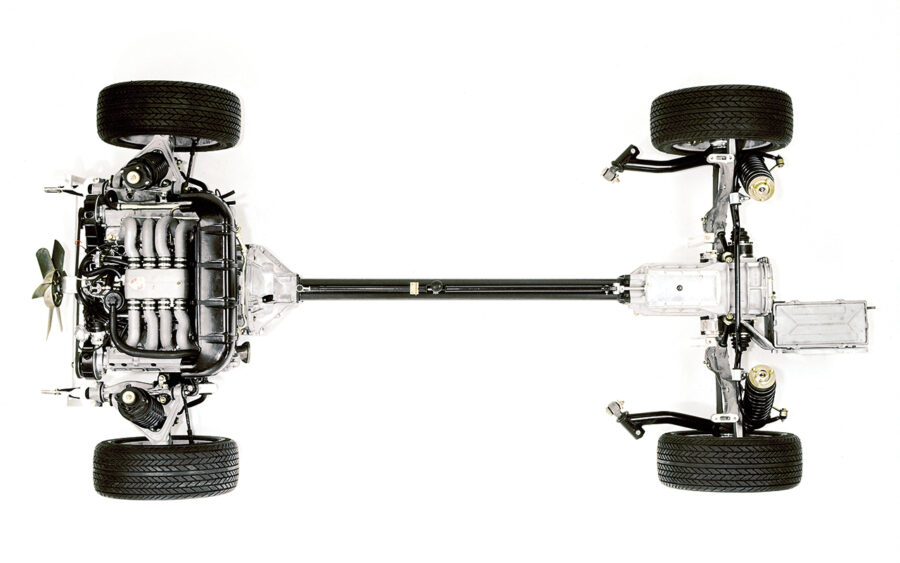
Bird’s-eye view of the 928’s chassis, with V8 up front and Weissach axle exposed at the rear
The story goes that Bantle drove the vehicle around the skidpan at the Weissach test facility while Walter Näher, an up and coming race engineer, sat in the back and attempted to counteract the lift-off oversteer. After a significant amount of testing, it was discovered that only minute amounts of rear steering (i.e. the toe angle of the rear wheels) was needed to maintain stability, but the change in toe angle had to be really quick to be effective.
Porsche quotes a window of 0.2 seconds, though doesn’t expand on how that was measured by its engineering team in the early 1970s. Presumably, the quoted time would vary depending on the speed of the car. Regardless, armed with the knowledge that only small amounts of toe change were required, Gorissen’s gang set about finding an affordable and compact solution. Hans-Hermann Braess — who went on to head up Porsche’s research department following launch of the 928 — is credited with the end result, which is a short extra control link between the lower wishbone and the body-mounted rubber bushing, plus a few tweaks to the placement of the mounting points on the body. You’d barely notice this in a photograph of the suspension, making it all the more elegant.
Under braking and deceleration, the extra pivot actually causes a little toe-in at the rear wheels, and the strength of this effect can be minutely adjusted by the length of the control link, along with the geometry of the rest of the wishbone and its mounting, of course. “The Weissach axle suddenly gave the 928 much more stable self-steering properties because the car no longer oversteered,” recalls Frank Lovis, a Porsche test driver in period. “It didn’t make the 928 any faster in curves, but it did make the new model much easier to handle, especially for drivers with average skill behind the wheel.” Job done, though it took until 1975 before the 928’s rear suspension system was signed off and announced to the world as the now-famous Weissach axle. That’s not at all the end of the story, though — the principle of the Weissach axle remains in place today.
The next major development of the idea took the form of the 993-generation 911’s Light, Stable, Agile (LSA) rear axle. It appears the idea for this setup, which included the Weissach axle’s solution of controlling the steering angle of the rear wheels, began in the stillborn 989, a front-engined, four-door luxury Porsche. Ulrich Bez became the marque’s Director of Engineering in late 1988 and, in terms of creating a replacement for the 964, was immediately thrown in at the deep end.
It’s reported the 993 was originally intended to receive an electrically driven active rear-wheel-steering system, but within the constraints of tightening budgets and a desire to reduce weight at the same time as enhancing refinement, Bez adopted the 989’s rear axle suspension layout instead. Thus, the LSA was born. It used the Weissach axle theory to control the toe angle of the rear wheels, but it also reduced squat under acceleration, as well as dive under braking, resulting in a far more stable 911. The subframe design allowed for further isolation of unwanted road noise from the cabin.

Porsche seemingly forgot about active rear-wheel steering for a while, until the introduction of the 918 Spyder technological tour de force in 2013. For this limited-production mid-engine plug-in hybrid sports car, electromechanical actuators replaced the toe control arms of the Weissach axle, allowing close control of the angle of the rear wheels. This system goes a lot further than the passive setup, and its operation can be altered on the fly. Hence, at low speeds, both rear wheels are turned in the opposite direction to the fronts, effectively shortening the wheelbase. This makes parking and manoeuvring much easier and also gives the car a particularly agile response to steering inputs in slow-speed direction changes. At high speed, however, the rear wheels are turned in phase with the fronts, aiding stability when changing lanes or during quick cornering.
Since the arrival of the 918, active rear-axle steering has been rolled out across the Porsche range and continues to be finessed, not least in terms of the hardware used to control toe angle and the software deciding when (and by how much) to turn the rear wheels. The sophistication of the latest systems may be a world away from the early Weissach axle implementation, but the principles remain unchanged — the joy of driving a Porsche may never have been brought to so many people if it wasn’t for the ingenuity of engineers working on the 928.

